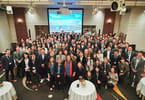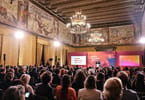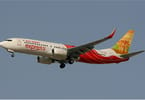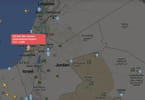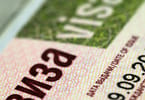HONG KONG – On a recent, rainy weekday, the owner of a jade shop in Causeway Bay sat alone in her store. While business was brisk at Bowrington Road wet market next door, few shoppers gave a second glance to the jewellery in her shop window on Tin Lok Lane.
“It has been quiet these two months. There are fewer mainland tourists visiting,” the woman says. “The tourists buy more than locals. Businesses need them. We pay the government taxes and rates. If the government stops tourists from coming, is it going to pay us?”
Like many business owners, she fears the situation will get worse as the government looks to cap the number of tourists arriving under the individual visit scheme, which allows mainland tourists to come to Hong Kong without joining tour groups.
The scheme was a core element of the Closer Economic Partnership Arrangement between the Hong Kong and Beijing governments. Introduced 11 years ago tomorrow, Cepa was intended to revive the city’s economy after the 2003 severe acute respiratory syndrome crisis.
At its launch, the individual visit scheme was open only to residents of a few key cities, such as Beijing, Shanghai, Guangzhou and Shenzen. It has since expanded to 49 cities, helping to push the number of mainland tourists to 40 million last year out of 54 million total arrivals. The government expects total visitor numbers to grow to 100 million by 2023, fuelled largely by further increases in mainland visits.
But the influx has led to a love-hate relationship between Hongkongers and mainland tourists and sparked a debate about how the scheme can be reformed to reduce the social impact of tourism without hitting the economy.
While retailers, landlords and hoteliers have welcomed the visitors, the influx has caused culture clashes and complaints that mainlanders are clogging the streets and hogging daily necessities, and that high rents are pushing out small, local businesses in favour of chains. There have been anti-mainland protests in tourist hotspots, and counter-accusations that the protesters could put the local economy at risk.
In an attempt to pacify the public, the Hong Kong government is in talks with Beijing to overhaul the scheme. That could mean capping how often a visitor can arrive under the scheme, or limiting the overall number of visitors. The final decision rests with the central government, which has indicated it is open to changing the scheme.
Some analysts say Hong Kong must define a clear-cut, sustainable model for tourism, and identify which groups of tourists the city wants and needs.
They suggest the city focus on big-spending overnight visitors, rather than day trippers who buy goods near the border to resell on the mainland – so-called parallel-goods traders. The problem was highlighted on Thursday, when Zhang Xiaoming , director of the central government’s liaison office, took the rare step of making a high-profile visit to the border town of Sheung Shui to study parallel trading’s impact.
“There must be shortcomings in any policy, and what a government should do is to balance the interests of different parties. Inconsistent policies will increase uncertainty for investors,” said Dr Tommy Leung Tin-cheuk, an assistant professor of economics at Chinese University. “Economic development is not only about gross domestic product. Overcrowding and mainland-HK conflicts are not revealed by that indicator, but must be taken into consideration.”
Tourism is a key pillar of Hong Kong’s economy, accounting for 4.7 per cent of GDP and engaging a 250,000-strong workforce, according to Secretary for Commerce and Economic Development, Greg So Kam-leung.
Among the options the local and central governments are reported to be considering is limiting mainland residents who hold multiple-entry permits – most of whom live in Shenzhen – to 52 visits per year.
But limiting them to one visit per week was not enough for lawmaker Michael Tien Puk-sun, of the New People’s Party. He said a limit of 15 visits would offer the best balance between economic and social concerns. Tien has warned of the growing pressure on the city’s infrastructure, despite admitting he has benefited from the influx through G2000, the clothing chain he founded.
Multiple-entry permit holders made a combined total of 12.15 million trips last year, government figures show – almost double the 6.17 million visits in 2011. No official figures exist for the number of permit holders, but some lawmakers have put the figure at 1.5 million.
But average daily spending per head for same-day visitors on multiple-entry permits was just HK$2,220 last year, much lower than the average of HK$8,123 for each overnight visitor.
Tourism was responsible for 32 per cent of economic activity in the retail sector in 2012, up from 26 per cent in 2008, government figures show. In the catering sector, the proportion rose from 14 per cent to 20 per cent over the same period.
Besides the impact on the community, analysts also warn that the rapid increase in the number of mainland visitors risks squeezing out overseas tourists who once dominated the market.
Mainland visitors made up 77 per cent of tourist arrivals in the first four months of this year, according to the Tourism Board. As recently as 2008, mainlanders made up just 57 per cent of visitors for the full year.
By comparison, visitors from Japan made up just 1.8 per cent of arrivals in the first four months. The country was once the city’s biggest source of visitors.
“Hong Kong is too reliant on a single market,” said Andy Kwan Cheuk-chiu, director of the ACE Centre for Business and Economic Research, who has studied the city’s tourism market.
Kwan has assessed the likely effects of a cut in mainland visitor numbers, and believes limiting arrivals in the short term can help the development of a healthier tourist industry in years to come.
His research is based on a cut in mainland visitor numbers of about 20 per cent. Kwan says such a cut would reduce the city’s projected GDP growth for this year from 3.3 per cent to 1.4 per cent. Some 10,000 people would lose their jobs, he says, taking the unemployment rate up from its historic low of 3.1 per cent to 3.48 per cent. However, with unemployment low and industries complaining of a labour shortage, Kwan believes redundant workers will quickly find work.
The impact will be less grave than envisioned by officials, Kwan says, given the flexibility of the city’s economy. “The government just lacks the political energy and determination to make a decision.”
Still, the idea of curtailing tourist numbers alarms Hong Kong Retail Management Association chairwoman Caroline Mak Sui-king. She believes any limit on visitor numbers will send the wrong message and lead to unintended consequences.
“If we give the signal that tourists are not welcome, people would just stop coming to Hong Kong. Nobody would know if tourist arrivals would plummet 30 or 50 per cent,” she said.
She warned that any deliberate cut in visitor numbers would put the jobs of the city’s 250,000 retail workers in jeopardy.
But Leung, of Chinese University, said landlords would be hit hardest as retailers became less willing to pay sky-high rents. But lower rents would have a positive side as small, local-oriented shops would thrive.
Leung said the city would only draw the maximum benefit from tourism if it developed more attractions unique to Hong Kong, like Ocean Park, or night markets in Yau Ma Tei and Mong Kok. Such attractions would appeal to leisure travellers rather than those only interested in buying brand-name goods at chain stores. After all, the goods were imported, so sales would add little value to the city’s economy.
The government is keen to stress that more infrastructure for tourists is on the way, including high-end hotels near the Kai Tak Cruise Terminal, Ocean Park’s new water park and further expansion at Disneyland.
But Professor Lui Tai-lok, head of the SynergyNet think tank, said handling the issue of mainland visitors merely as a question of “tourism” was no longer enough. In fact, the question is part of the wider picture of integration with the Pearl River Delta region. “Those same-day visitors are not looking for tourist attractions. They may come for shopping or for a short weekend stopover,” Lui said.
But whichever way the debate goes, the Causeway Bay shopkeeper does not want to go back to the bad old days. Her family opened the store at about the time of the Sars epidemic.
“I didn’t see a single customer in a month during the outbreak,” she recalls. “Then it was the financial crisis in 2008. If it wasn’t for the tourists we wouldn’t have made it through.”
WHAT TO TAKE AWAY FROM THIS ARTICLE:
- But the influx has led to a love-hate relationship between Hongkongers and mainland tourists and sparked a debate about how the scheme can be reformed to reduce the social impact of tourism without hitting the economy.
- The problem was highlighted on Thursday, when Zhang Xiaoming , director of the central government’s liaison office, took the rare step of making a high-profile visit to the border town of Sheung Shui to study parallel trading’s impact.
- Like many business owners, she fears the situation will get worse as the government looks to cap the number of tourists arriving under the individual visit scheme, which allows mainland tourists to come to Hong Kong without joining tour groups.



